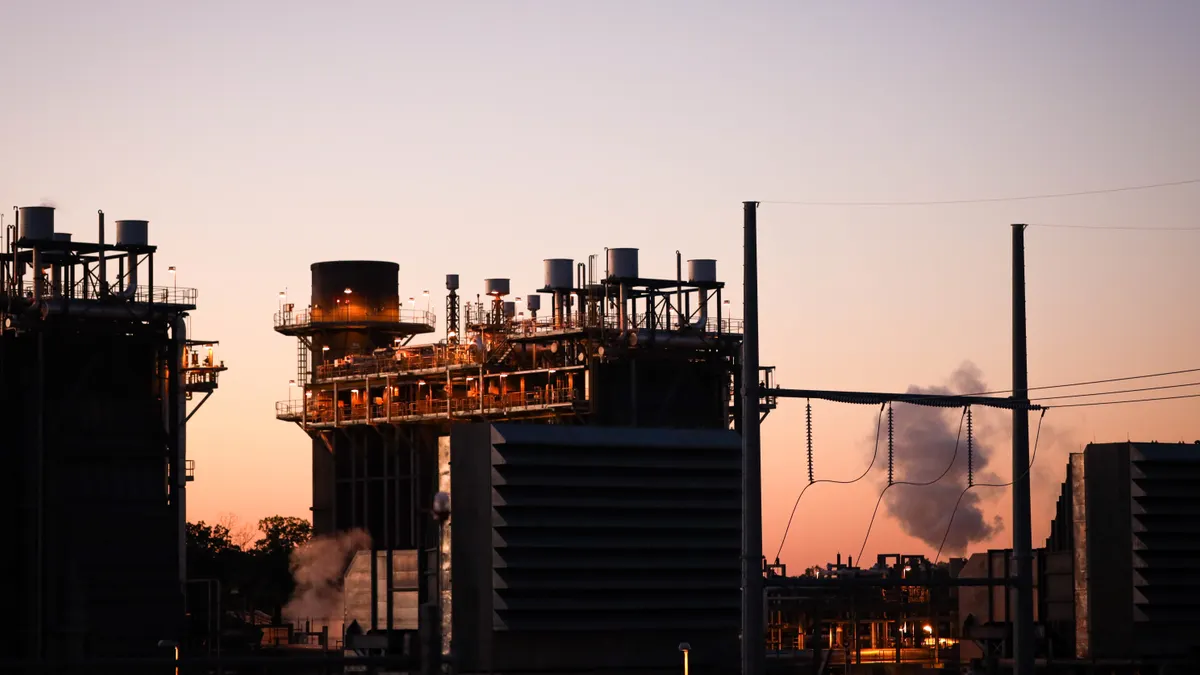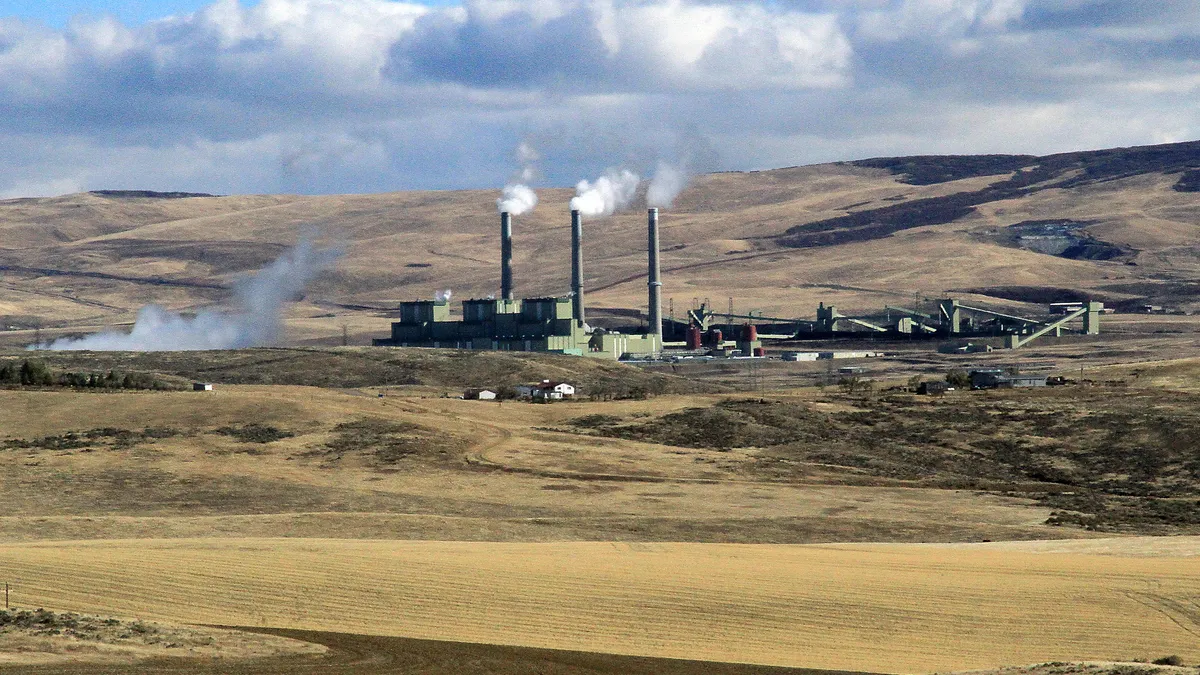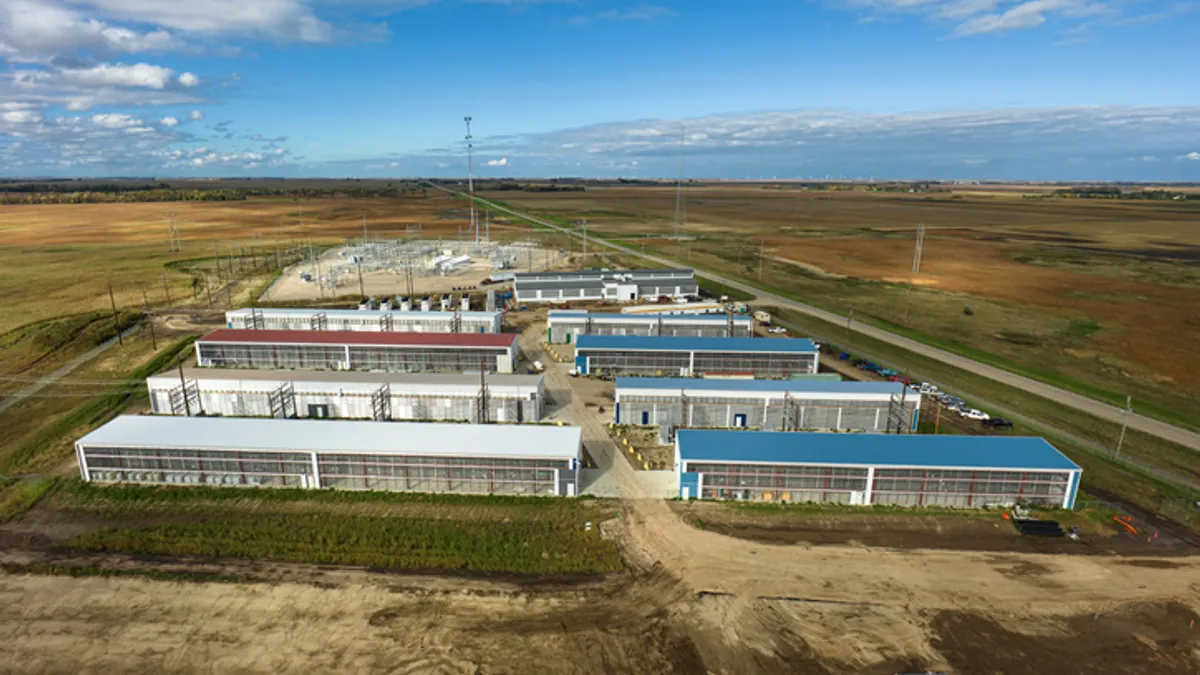For the third year running, respondents to a Utility Dive survey of electric utility professionals reveals that the U.S. power mix is undergoing a fundamental shift, fueled by economic forces, state and federal environmental regulation, and growing consumer demand for clean energy.
“Due to emissions regulations and clean energy incentives at the state and federal level, along with steady price declines in natural gas and renewable generation, the utility fuel mix is undergoing a profound shift,” observes Utility Dive’s State of the Electric Utility 2016 report.
“Most utility respondents see natural gas, utility-scale renewables, and distributed generation as the biggest winners in the future power mix,” the survey found.
All told, 91% of more than 500 respondents indicated they expect utility-scale solar to increase significantly or moderately in their fuel mixes over the next five years. 77% see wind doing so, and 72% expect the same for natural gas. 91% indicated they expect either significant or moderate increases in distributed energy resources (DERs).
As for what will decrease in their power mixes, 82% see coal staying the same or moderately or significantly decreasing over the next 20 years, 90% see that happening with nuclear power, and 98% see that happening with petroleum generation.
The numbers closely track results from Utility Dive surveys over the past few years, with a bit more enthusiasm for renewables in 2016. In last year's survey, 79% expected increases in utility-scale solar over the next 20 years, 72% expected them for wind, and 74% for natural gas. 84% thought DERs would increase.
In 2014, the power mix questions were a bit different, but similar narratives emerged. 50% of respondents predicted that natual gas would be their primary generation fuel in 20 years, and 66% indicated they would retire at least some coal generation over the next five years. 54% said they were under pressure from stakeholders to provide more clean energy options, and 27% said they already provideded "sustainable" energy.
For the 2016 report, Utility Dive surveyed 515 utility professionals between Dec. 2015 and Jan. 2016. Respondents hailed from every corner of the nation and were split fairly evenly by size. Utilities with 4 million or more customers comprised 23% of respondents, while those with a customer base of 1-4 million notched 28%. Utilities with 250,000-1 million customers comprised 22% and those with under 250,000 customers were 28% of the pool.
The sentiments of the respondents to the Utility Dive survey is reflected in recent numbers on generation capacity growth.
Renewables were almost 64% of the nearly 16.5 GW of new U.S. electricity generation capacity brought online in 2015, according the new "Energy Infrastructure Update" from the Federal Energy Regulatory Commission (FERC). The wind industry alone added almost 8.0 GW, taking the lead for new capacity from the natural gas industry, which added 5.9 GW. The solar industry was third in new installed utility-scale capacity with just over 2.0 GW.
With distributed solar added in, the numbers are more impressive for solar. A recent report from GTM Research and SEIA estimated the solar industry added nearly 7.3 GW of capacity from all sectors in 2015, outpacing new natural gas generation for the year. Extensions of key tax credits for renewable energy at the end of 2015 will continue to fuel significant growth through the rest of the decade, analysts told Utility Dive.
Economic and environmental realities "could change the geopolitics of U.S. energy,” University of California, Berkeley, economist David Roland-Holst reflected in recently observed to Utility Dive. “Wyoming is a coal state but it could become the Saudi Arabia of wind. There are tectonic forces at work in these markets.”
An 'irreversible' transition
While it started from a high baseline, sentiment toward renewable resources and distributed energy technologies in the 2016 Utility Dive survey is even more positive than it has been in the past few years. That trend has been reinforced by a number of outside entities in recent months.
“Alternative energy’s shift to the mainstream is largely complete and likely irreversible,” according to the newly released "Trends to Watch in Alternative Energy" from the Deloitte Center for Energy Solutions.
FERC’s numbers support that conclusion for 2016. There was no new capacity added by the nuclear industry in 2015, only 15 MW of new oil-burning new capacity, and only 3 MW of new coal burning capacity. Those numbers were dwarfed by additions in natural gas and renewables, and the trend is expected to continue.
“Experts anticipate the recent extension of key federal tax credits for both wind and solar to keep growth strong through the end of the decade, after which Clean Power Plan compliance and state mandates are expected to drive further growth,” Utility Dive’s survey adds.
"The investment tax credit extension will result in a 20 GW annual solar market in the U.S. by 2020," GTM Research Senior Vice President Shayle Kann recently noted. That is very nearly today’s 25 GW of total installed solar capacity.
Even with the recent Supreme Court decision to delay implementation of the Clean Power Plan (CPP), the extension of wind's production tax credit (PTC) will drive an estimated 44 GW of new wind capacity from 2016 to 2021, Bloomberg New Energy Finance recently calculated. That is significantly more than the 25 GW it estimated would have been built without the PTC extension.
The tax credit extensions and the CPP together could drive “annual [renewable energy] capacity additions topping out at an unprecedented 30 GWs in 2021,” according to a recently-published report from Rhodium, “Renewable Tax Extenders: The Bridge to the Clean Power Plan.”
The Rhodium analysis, completed before the Supreme Court decision, estimates 116 GW of cumulative utility scale wind and solar capacity addition due to the tax extenders and the CPP. With dropping natural gas prices and renewables technology costs, it could be even more.
Reasons behind the utility exec’s insights varied. Probably because of a strong solar resource, "52% of Southwest respondents predicted a significant increase for distributed generation in their fuel mixes,” the survey observes. In New England, however, “66% of respondents predicted a significant increase for distributed generation, perhaps due to the region’s high electricity prices and existing reliance on natural gas generation.”
Utilities and regulators are also looking further into the future as they consider their generation and power mix decisions, the Utility Dive survey reports. While the Clean Power Plan deadlines may be delayed for about two years as a result of the Supreme Court stay, many in the sector anticipate further carbon regulation to come in the 21st century as the United States strives to meet emissions committments under the Paris Climate Accord and stem the tide of further climate change.
"If the U.S. moves toward deeper decarbonization in midcentury and beyond as many analysts expect, more stringent greenhouse gas goals could make gas plants increasingly unappealing, enhancing the appeal of long-duration energy storage to store renewable generation on the grid," the survey notes.
Drivers behind the transformation
The low expectations for coal and oil growth may be due in part to the fact that 37% of respondents see “sustainability” as “a compelling reason for utility executives to invest in clean energy,” according to the survey.
This could reflect a sincere commitment to environmental concerns among respondents, the survey points out. But it also demonstrates an awareness that utilities’ biggest customers want renewables-generated electricity and will turn to independent power producers if they cannot get it from their electricity providers.
Two-thirds of Fortune 100 companies and 43% of Fortune 500 companies have sustainability goals, according to the Rocky Mountain Institute's Business Renewables Center (BRC), which was created to encourage more corporate investment in clean energy.
BRC member companies are approaching 3 GWs of contracts for renewable energy-generated electricity. The BRC's goal is to have member contracts for 60 GW of renewables in the U.S. by 2030.
NV Energy’s Green Energy Rider, Duke Energy’s Green Source Rider, and Renewable*Connect, a new proposal from Xcel Energy Minnesota, are the early leading examples of utility efforts to meet large customers’ renewables demand, according to Letha Tawney who, as Utility Innovation Director at the World Resources Institute (WRI), is helping lead the BRC effort.
Another 28% of respondents see mandates and targets as a reason for utility investments in renewables, efficiency and energy storage,” the survey adds.
A key element in renewables becoming a growing part of the U.S. energy portfolio is more aggressive state-level renewables mandates, according to Deloitte U.S. Alternative Energy Team Leader Marlene Motyka. Examples are Hawaii’s recent increase to a 100%-by-2045 mandate, California’s increase to 50% by 2030, New York’s increase to 50% by 2030, and Vermont’s increase to 75% by 2032.
Natural gas is a utility strategy for meeting regulatory requirements and accommodating the variability of the renewables needed to meet those mandates, Motyka noted. Coal and oil serve neither purpose.
Challenges to the changes
Nearly a third of the Utility Dive respondents (32%) see “reliably integrating variable renewables and distributed resources” as the biggest challenge from the changing power mix. Almost as many (31%) see the biggest challenge as “minimizing the cost of the change to the customer.”
Ensuring reliability and minimizing costs have always been central to the utility mission, but in the 21st century, new technologies, regulations and environmental challenges are transforming the face of these concerns, the survey explains.
This is accentuated by the anticipated increases in distributed energy resources (DERs) in the utility resource mix. “Resources on the customer side of the meter — particularly rooftop solar — are forcing utilities to rethink their systems to accommodate two-way power flows,” the survey reports.
Expectations of “moderate” and “significant” increases in the respondents’ more favored resources are comparable as well. More utility executives expect “significant” increases in utility-scale solar (42%) and DERs (42%) than expect “significant” increases in natural gas (28%) and wind (25%).
The less optimistic inclination toward natural gas may be due to “concerns over future emissions regulations and the potential volatility of gas supply and prices,” the survey notes. The lesser enthusiasm for wind growth, it adds, could be due to wind’s already greater cumulative penetration of 4.9% in the nation’s generation mix relative to the 1.1% solar penetration.
But if the survey shows a more tepid outlook for fossil fuel resources, they will still remain a key portion of the power mix for utilities in the decades to come.
Though Duke Energy is consistently a leader in the Solar Electric Power Association rankings for utility-scale solar development, “natural gas, nuclear and coal will continue to be the dominant sources of generation,” Spokesperson Randy Wheeless emailed Utility Dive.
“But we see renewables becoming a bigger part of the mix. Growing numbers for wind and solar — plus existing hydro — give renewables a lot of momentum.”






















